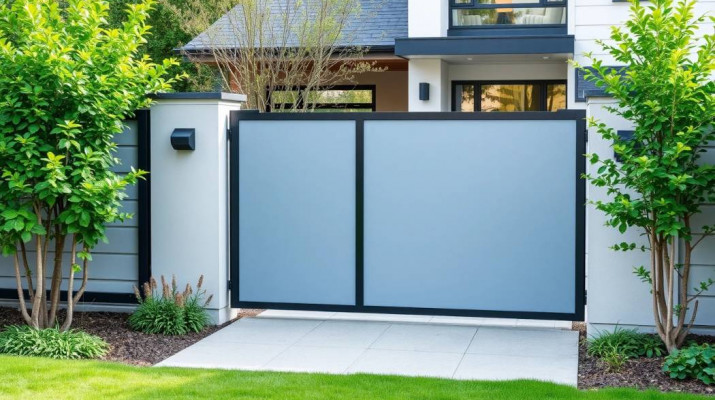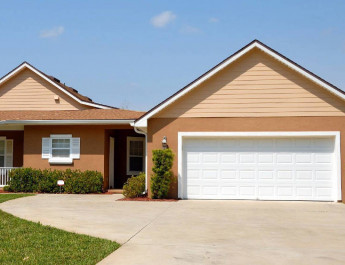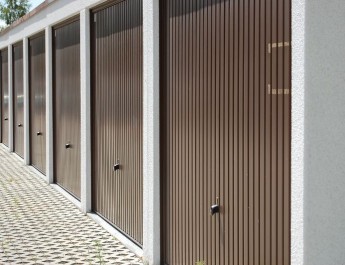Openers and automation systems for garage doors play a key role in today’s solutions for single-family homes, multi-family buildings, and industrial facilities. Modern technologies in this field offer not only convenience but also safety, energy efficiency, and integration with smart building management systems. In this article, we will discuss the types of openers, automation options, as well as issues related to safety and energy efficiency.
Types of garage door openers
1. Chain drive openers
Chain drive openers are one of the most popular solutions for garage doors, especially sectional and up-and-over doors. The opener operates by moving the door using a chain.
Advantages:
- High durability.
- Suitable for heavier doors.
- Relatively low purchase and installation costs.
Disadvantages:
- Higher noise levels compared to other types of openers.
- Requires regular maintenance, including chain lubrication.
2. Belt drive openers
Belt drive openers function similarly to chain drive systems, but they use a special belt instead of a chain. This solution is quieter and more comfortable to use.
Advantages:
- Very low noise level.
- Smooth operation.
Disadvantages:
- Slightly higher price than chain drives.
- Less suitable for very heavy doors.
3. Screw drive openers
Screw drive openers use a threaded rod mechanism to raise and lower the door. They are commonly used for heavier industrial doors or in environments requiring long-term reliable operation.
Advantages:
- Reliable in harsh operating conditions.
- Low maintenance frequency.
Disadvantages:
- Relatively higher price compared to other opener types.
- Louder operation than belt drives.
4. Roller drive openers
These are designed for rolling shutter doors that wind around a drum positioned above the garage opening. The roller drive mechanism is usually mounted on the shaft.
Advantages:
- Compact size saves garage space.
- Relatively easy installation.
Disadvantages:
- Limited capability for operating very large or heavy doors.
- Increased wear with frequent use.
Automation and smart systems
Modern garage door openers are often integrated with advanced automation systems that allow control via remote, smartphone, or even voice. Examples of modern features include:
- Remote control – with Wi-Fi or Bluetooth integration, users can open and close the door from anywhere in the world.
- Obstacle detection systems – the automation includes sensors that stop the door when an obstacle is detected, significantly increasing safety.
- Smart home integration – openers can be connected to systems like Google Home or Amazon Alexa, enabling voice control.
- Timed closing – users can set the door to close automatically after a specified time, enhancing safety in case it is left open unintentionally.
Operational safety
Safety is one of the key aspects when choosing a garage door opener. The most important safety features include:
- Photoelectric sensors – installed on both sides of the door to prevent it from closing if an obstacle is detected, helping to avoid accidents.
- Automatic reverse mechanism – detects excessive resistance during closing and reverses the door movement.
- Anti-burglary locks – openers can be equipped with additional locking systems to prevent manual opening in case of attempted break-in.
Energy efficiency
Modern garage door openers are increasingly energy-efficient. Many models feature:
- Low-power standby mode – when the door is not in use, the opener automatically enters an energy-saving mode.
- Backup power supply – some openers include batteries that allow operation during power outages.
- Solar power options – modern openers can be powered by solar energy, reducing operating costs and supporting environmental sustainability.
Installation and maintenance
Proper installation of garage door openers is essential for long-lasting and trouble-free operation. It’s important to follow the manufacturer’s instructions and ensure all components (opener, tracks, photo sensors) are correctly calibrated. Regular maintenance, including checking the condition of mechanical parts and replacing worn components, significantly extends the lifespan of the opener and reduces the risk of failure.
Conclusion
Garage door openers and automation systems are not just about convenience—they also improve safety and energy efficiency. When choosing the right opener, it’s important to consider the type of door, its weight, frequency of use, and available automation options. As smart home systems become more popular, modern openers now offer features that were once reserved for high-end installations. Proper installation and regular servicing are key to reliable, long-term operation.




